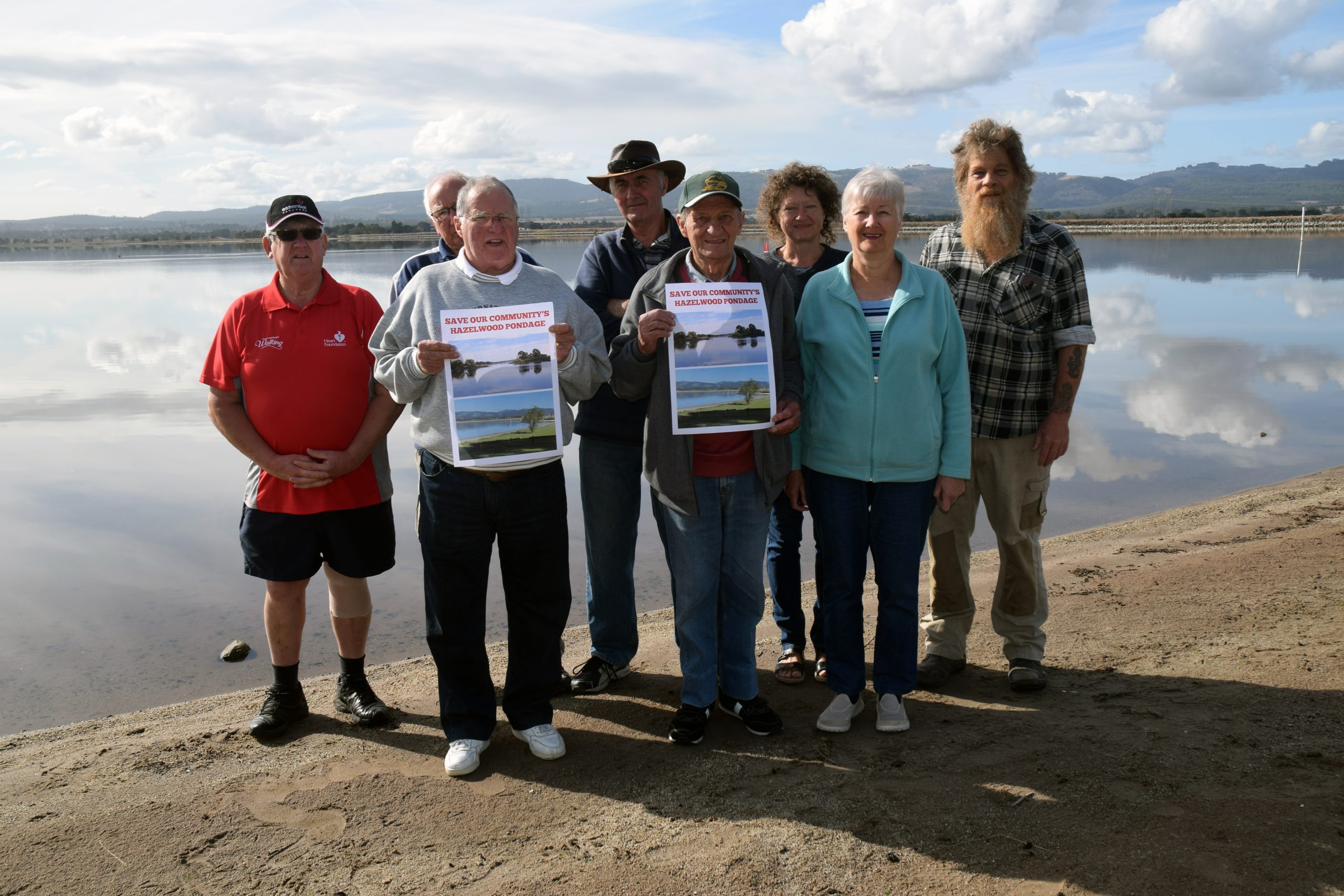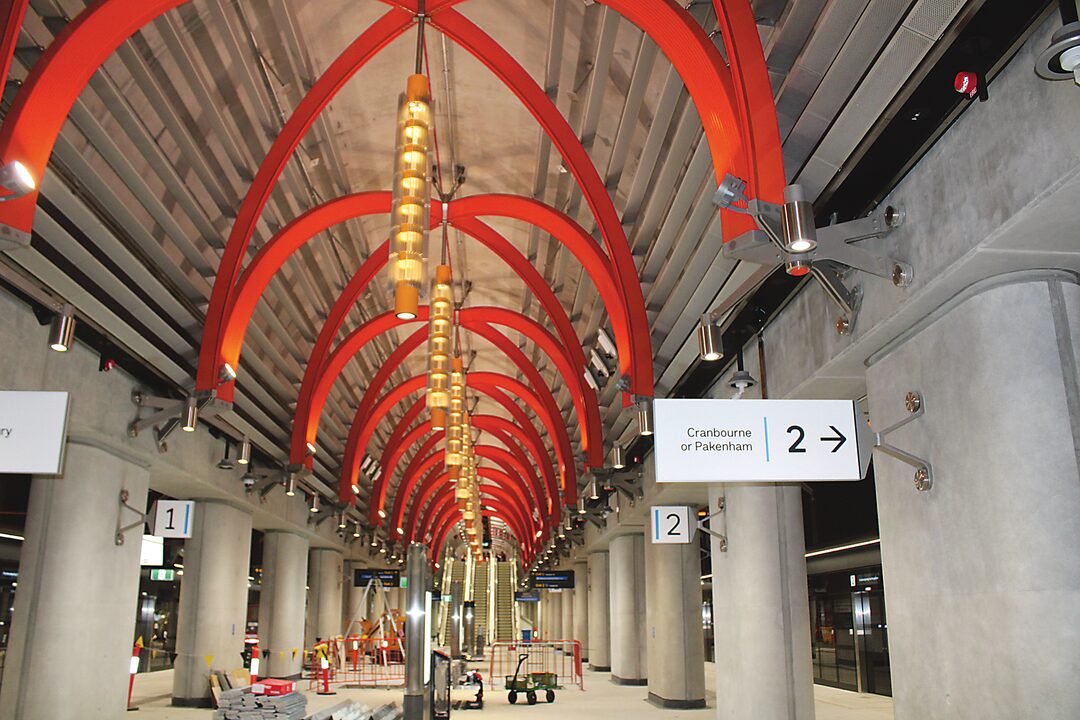By AIDAN KNIGHT
THE Express was recently invited to a limited press-only tour of the Metro Tunnel, slated for opening in less than a month.
The walk was limited to the newly constructed State Library Station, which has entrances on Franklin Street, as well as Swanston and Latrobe streets, and will connect Gippslanders to the Sunbury Line via the Pakenham and Cranbourne lines.
It’s aimed to not only add greater access to the five new stations in key areas of the CBD, but also the new station at Keillor East and the eventual Melbourne Airport rail. The new tunnel will particularly impact the 70 per cent of V/Line services that currently use the Sunbury-Cranbourne-Pakenham corridor.
Commuters from Gippsland will now enjoy more direct routes to critical precincts like Melbourne University and the medical precinct, making regional travel more convenient.
The Express was treated to an early access to the station at the State Library, which had purposefully inspired architecture based on the interior of the heritage building.
The platforms themselves feature a 10-metre high sweeping ceiling, with countless golden arches that were intended to recreate a sunset seen by the architects when they first landed in Melbourne for the project.
These designers were Hassel, an Australian firm working closely on the infrastructure and planning for the 2032 Brisbane Olympics, as well as Weston Williamson (prolific in UK rail design), and Rogers Stirk Harbour (International Towers in Sydney).
State Library was the fifth and final station unveiled, but is yet to lock in an opening date, as is the rest of the Metro Tunnel, which both the Premier Jacinta Allan and Transport Minister Gabrielle Williams have slated will open only in “early December”.
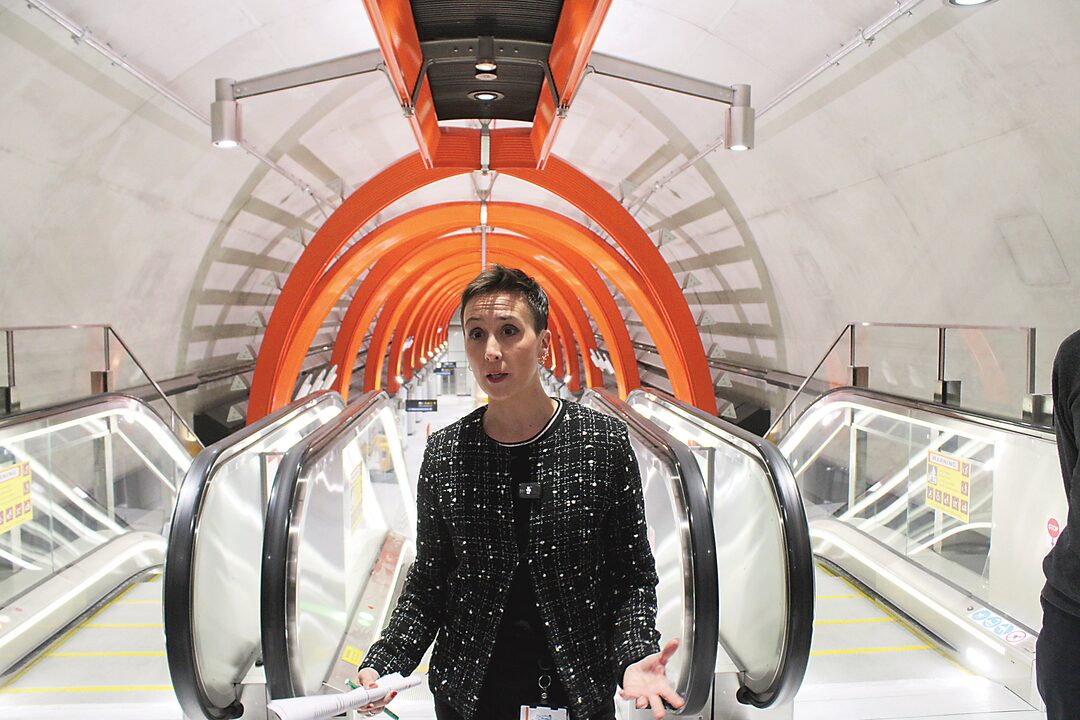
That timeline shifted on November 16, when the Premier, appearing alongside Prime Minister Anthony Albanese at a second press conference and tour, abruptly announced: “The Metro Tunnel is opening early. Not next month – this month, on Sunday 30 November.”
The phrasing suggested Victorians were getting the project a full month ahead of schedule, despite the new opening date falling on the very last day of November – effectively a one-day difference from the originally expected early-December window.
The announcement has nonetheless added pressure to deliver final regulatory approvals and finish remaining works within an accelerated timeframe.
Ms Williams, a prominent political face in the Gippsland region this year, attended alongside the Express and emphasised that the underground station’s height matches that of Marvel Stadium.
It also boasts the longest escalator in Melbourne, at the Franklin St entrance, double the size of the existing one at Parliament Station, but we were unable to witness this in action on the day due to works still being completed. Overall, there is 27 individual escalators in the facility.
The most obvious attribute of the station, amid its fresh, contemporary design and artsy lighting (chandeliers all made in Melbourne) and sleek screens, is its sheer size.
The double-platform opens up like a mediaeval hall, 220 metres in length, to one day accommodate services of up to 10-car trains. This is a future-proofing strategy, as infrastructure has been built to support the next 50 years of patronage amid population growth.
The platforms themselves are separated from the actual tracks, which are housed by a sort of airlock tube, to protect commuters from the trains that enter the station at 80kmph.
These trains are computer-driven to ensure the carriage doors line up with those of the actual airlock, and all that is required of drivers is to hit the open/close buttons.
This creates an environment that is almost impossible for unauthorised people to access the tracks, whether accidentally or otherwise.
These trains have an accuracy of stoppage of 300mm of the airlock doors. This is the most advanced platform management in Victoria, enabling both faster and more efficient travel, while also upgrading the safety of passengers, simultaneously minimising risk and disruption.
In terms of decoration, the walls of the Swanston St entrance (internal) are adorned with Danny Mallory’s artwork featuring Aboriginal women, strategically placed to catch light at a particular time of day that accentuates the artwork.
Many of the structures on the platform have deliberate design elements that mimic Australian insects and celebrate local culture, and the floor features sporadically placed 35 laser-cut granite art pieces featuring Indigenous-inspired core prints, in a contemporary style of mosaic.
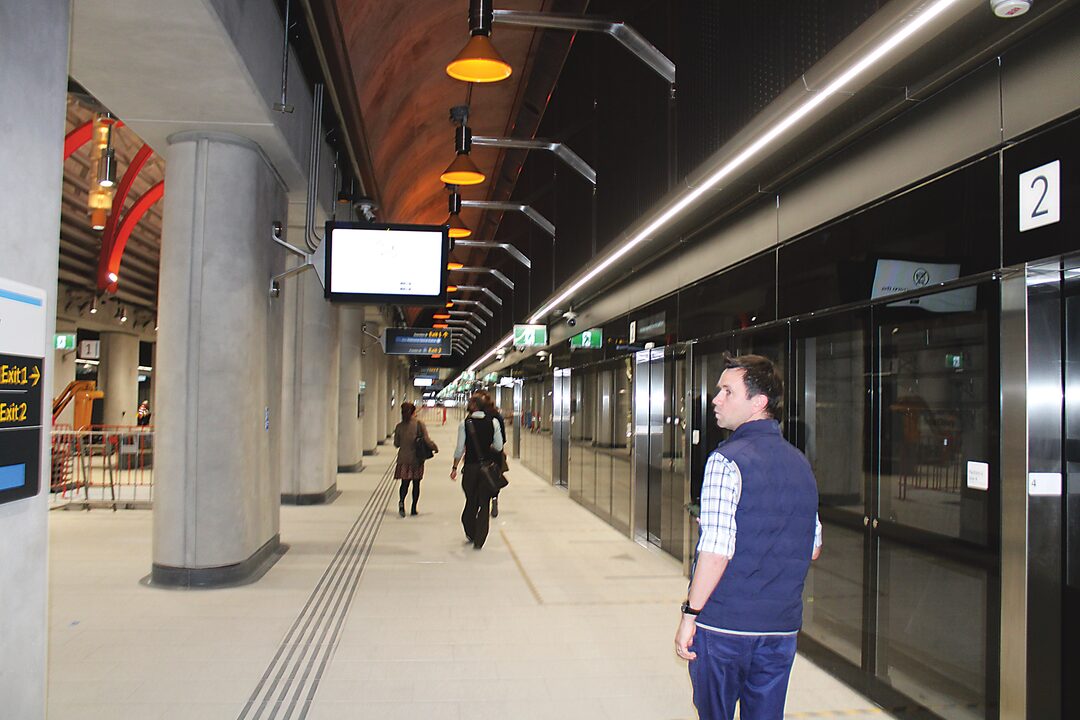
The project’s senior engineer Ben Ryan led much of the tour, describing it as a testament to engineering precision.
“Building 42 metres underground while hearing train announcements from the city loop above was an incredible engineering challenge,” he explained.
“We essentially performed keyhole surgery in the heart of Melbourne’s CBD. This project has built a skill base that didn’t exist before. We’ve trained 7000 workers who now have world-class tunnelling and infrastructure expertise. It’s about creating a legacy of knowledge.”
While all this is impressive, it has cost the government $15.5b.
This staggering figure was more than worth it, according to the Transport Minister, who said “Governments are often accused of thinking in political cycles, for thinking short term and not investing in the long-term things that we should. This project is a demonstration that we took a deliberate decision that if you’re going to do the right thing by a community, you’ve got to invest in things that ultimately set us up for the future for a long time.”
Ms Williams also emphasised the long-term vision.
“There was never any guarantee, in fact statistically, far more likely that we’ll ever be the ones opening out. We knew this was the best part of a decade in construction. Not many governments get the privilege of governing for that, but it was done because it was the right thing.”
On the project’s broader impact, Ms Williams highlighted, “This is also having an eye to how our (Victorian) community is growing, where it’s growing, and how to connect and how we continue to get that money.”
Ms Williams stressed the project’s significance beyond immediate political gains.
“We took a very deliberate decision that if you’re going to do the right thing by a community, that you’ve got to invest in things that ultimately set us up for the future for a long time.”
The Minister positioned the Metro Tunnel as more than just infrastructure – as an investment in Victoria’s future, demonstrating a commitment to long-term planning and community needs that extends well beyond a single political term.
“We’re in the final stages of accreditation with the National Rail Safety Regulator,” Ms Williams explained.
“This isn’t a process we can rush. Every single system must be meticulously checked and verified.”
However, the timing raised questions.
Accreditation had not yet been secured at the time of the announcement, prompting some to argue the project was being pushed to meet a pre-Christmas deadline. During the Minister’s speech, construction noise inside the station briefly forced her to pause – a moment that underscored how close to the wire the works remain.
The tunnel, despite all its celebration and impressiveness, is still a waiting game, as the Premier’s office has not committed to anything more specific than “early December”, for the official opening of the Metro Tunnel and it’s five stations.
When questioned on this by the Express, the Minister looked to politely blame the regulator, as we rapidly approach a vague period that is in the grasp of the next few weeks.
The Minister was also prompted for comment on a vocalised concern from the firefighting community, about the Metro Tunnel, stemming from concerns over safety, particularly its lack of ventilation and the ineffectiveness of current breathing apparatus for underground emergencies.
“We’re integrating hundreds of complex systems. Fire Rescue Victoria needs to confirm their operational readiness, and we need absolute certainty about emergency response capabilities.”
“Unlike standalone rail projects, our Metro Tunnel must synchronise with our entire existing network – suburban, regional, and freight services. This isn’t a simple timetable change; it’s a network-wide transformation.”
The Express inquired as to when Gippslanders can expect to be able to take a train straight to the airport. This, unfortunately, is not a simple answer.
“Sunshine is effectively stage one of our airport rail project,” Ms Williams said.
“We’re untangling a complex network of tracks to create the critical space needed for this transformative connection.”
The Minister wouldn’t explicitly say this was the next of the several planned transport projects to be focused on for completion, or give even a ballpark completion timeframe, but could confirm that the groundwork for it has already begun, namely, the rail works at Sunshine.
The Sunshine works will be more than just a station upgrade. It’s a six kilometre track reconfiguration that will separate suburban, regional, and freight train movements, creating capacity for future projects.
“We’re in active discussions with the Commonwealth government and Melbourne Airport,” Ms Williams said.
“These conversations are progressing, and we’re committed to delivering this critical piece of infrastructure.”
While an exact timeline remains fluid, the Minister was clear about the project’s importance.
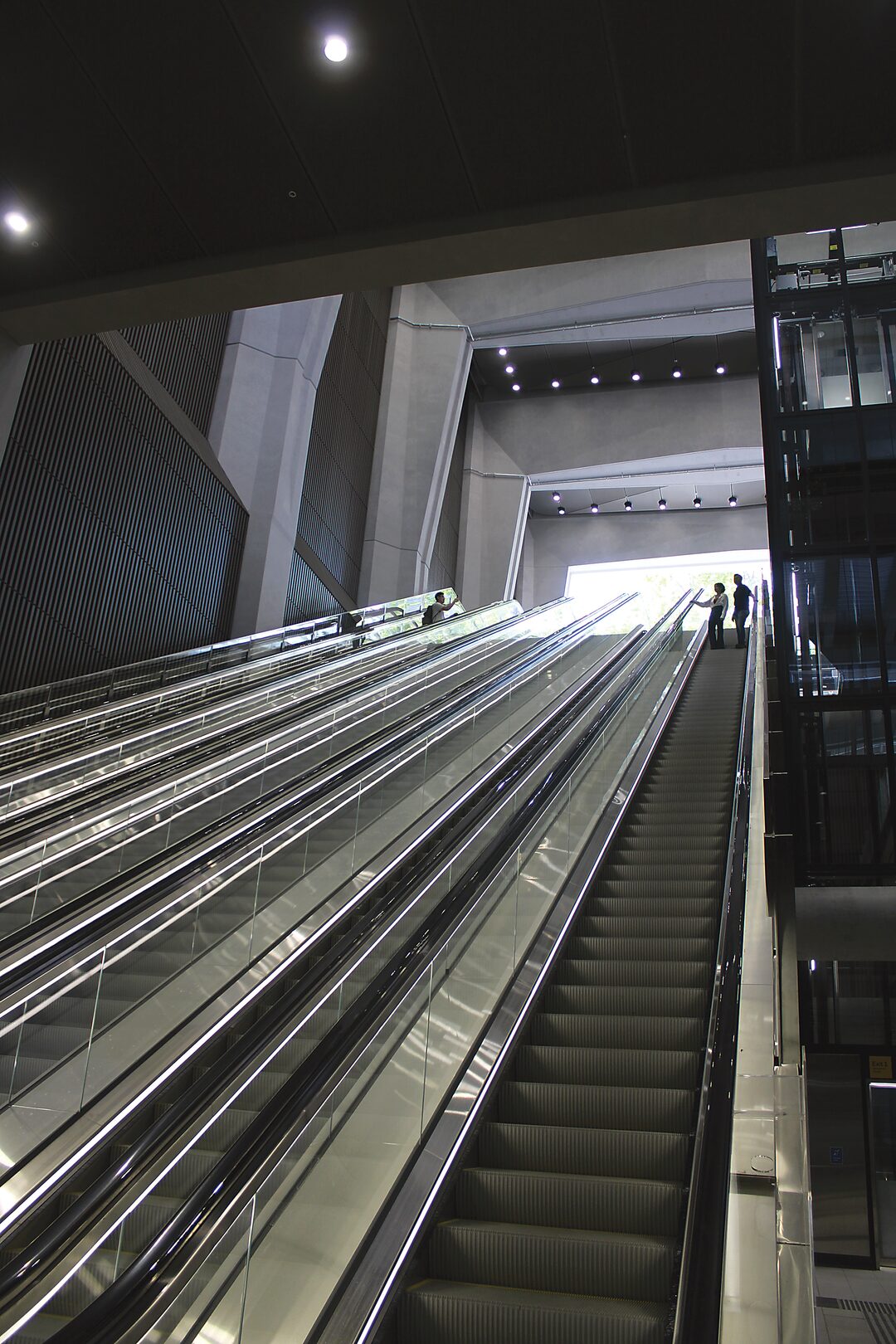
“This isn’t just about building a rail line – it’s about connecting our city, supporting our growing communities, and creating lasting infrastructure.”
Gippsland commuters will be able to experience more connected services, with the Metro Tunnel allowing for quicker and easier access to a wider range of lines.
If passenger choose to swap at Pakenham, they will enjoy services running straight to the five new underground stations, bypassing Southern Cross, giving commuters one-seat access to Parkville’s hospital and university precinct, RMIT and Melbourne Central via the State Library, the Flinders St/Town Hall area, St Kilda Road and Anzac Station, and the emerging Arden precinct.
Trains will then continue to the Sunbury Line, providing easier travel across the west and a future interchange for airport rail at Sunshine. Access to Flinders St and Southern Cross along the Gippsland corridor will remain unchanged if they stay on the V/Line service, running business as usual – but the Minister advises we can expect a better, more efficient timetable to be released in mid-January, ahead of the Premier’s “big switch” on February 1, 2026.
While frustrated commuters seek a concrete date, Ms Williams was clear.
“Safety comes first. We’ll announce the exact date as soon as we receive final regulatory approval. Victorians deserve nothing less than a thoroughly tested, completely safe transport system.”




